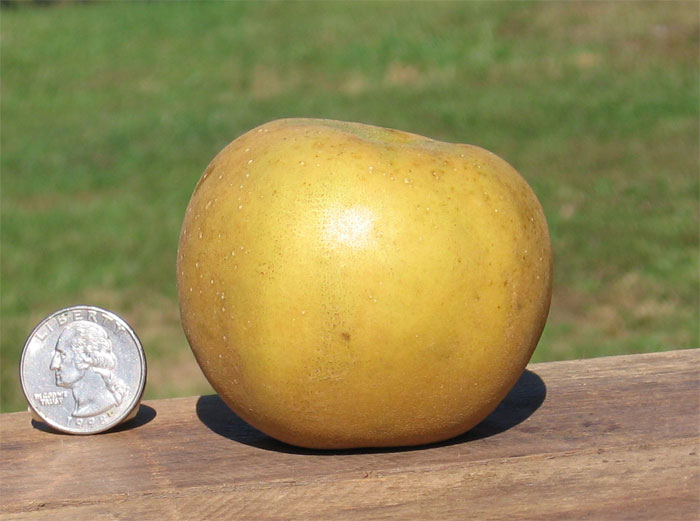Old Southern Apple Descriptions
(Page 1 of 3 - scroll the page to see all apples)
American Golden Russet
American Golden Russet: This apple originated before 1800. Its skin is a rusty-coated, golden color sometimes described as bronze. The fruit is excellent for fresh eating, drying, and especially for making cider. Fruit size is medium or below. It is well known for its sugary juice. Flesh is yellow, crisp, aromatic, and subacid. Ripens from September through October.
American Golden RussetAmerican Summer Pearmain
American Summer Pearmain: This apple was first described in 1817 and was grown throughout the South on a variety of soils. It received high marks from apple experts for its most exceptional taste. The fruit ripens gradually on the tree over a period of at least four weeks, making it popular for fresh eating. It also dries quite well. The tree is susceptible to fireblight and the fruit must be picked when ripe or its peak flavor is lost. Fruit is medium or larger in size, greenish-yellow with some red stripes, and oblong in shape. Its flesh is juicy, crisp, aromatic, and mildly subacid. Ripens from July to August. (One of my favorites)
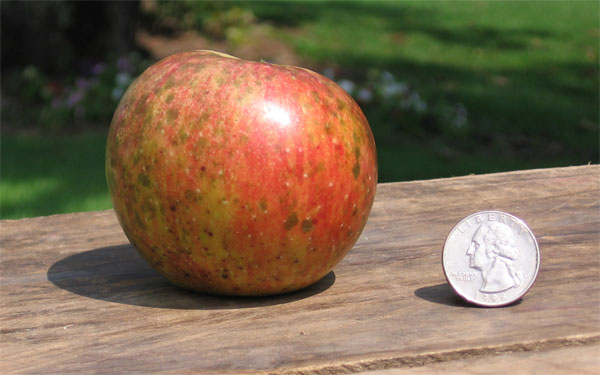

American Summer Pearmain
Arkansas Black
Arkansas Black: Originated in Arkansas around 1870. This apple is a good keeper and can best be described as “hard as a brick”. The tree is quite disease resistant. The fruit is a reddish-purple, almost black, with a hard, yellow, crisp flesh. The fruit begins ripening in late October and can be stored well into the winter months.

Arkansas Black
Aunt Rachel
Aunt Rachel: This apple is a local variety originating in Chatham County, NC. Apple expert Lee Calhoun has helped to spread this little-known apple across North Carolina. The tree is disease resistant, a fast grower, and its limb structure is such that pruning is made much easier. The tree begins to fruit early, producing excellent apples of good size. The apples are red with darker stripes. The flesh is white, firm, mildly tart, and juicy. It is good for eating and cooking. It ripens over a period of several weeks in late July and early August.
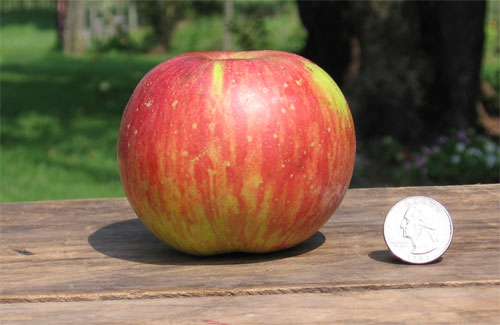


Aunt Rachel
Bevan’s Favorite
Bevan’s Favorite: First described in 1859, this apple is prized for its early ripening period, good flavor, and beauty. The tree is vigorous and productive. The fruit’s size is medium, its skin yellow with many red stripes and possibly a red blush on the side facing the sun. The flesh is juicy, crisp, and fine-grained. The apples ripen in early to mid July.

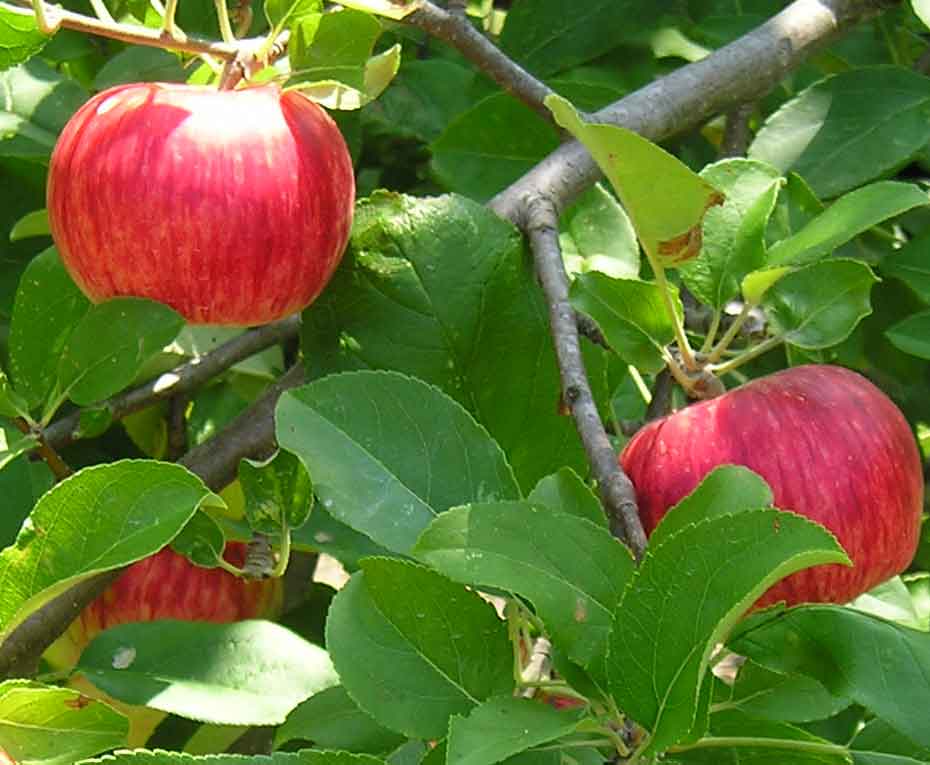
Bevan’s Favorite
Blacktwig (Mammoth Blacktwig)
Blacktwig (Mammoth Blacktwig): The muddy history of this apple places its origin in Virginia, Tennessee, or Arkansas during the 1800’s. This apple tends to be tart and of unparalleled fresh eating quality. It can also be used for cider or cooking, and is known to keep well. The tree is resistant to several apple diseases including fireblight and cedar apple rust. The tree tends to be productive, even on poor quality soils. The apple is above medium to large, skin green with a deep red and several red stripes. Its flesh is white, almost yellow, firm, juicy, and mildly subacid. Ripens late September through October. (My favorite all-purpose apple)
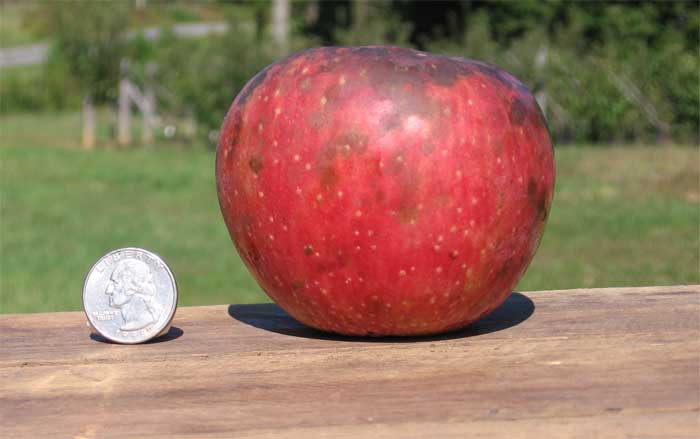
Blacktwig (Mammoth Blacktwig)
Carolina Red June
Carolina Red June : A North Carolina apple originating before 1800, this apple is perhaps the best eating apple to ripen before July. A cute, small to medium apple, its beauty is exceptional for such an early apple. It was prized for its cooking quality as well. The tree does well on many different soils, is productive, and tends to bloom late, assuring a crop most years. It is susceptible to apple scab and cedar apple rust. The fruit ripens over a period of several weeks. This apple is a must for apple lovers. The flesh is white, fine grained, tender, juicy, and briskly subacid. Ripens late June into July. (One of my favorites)
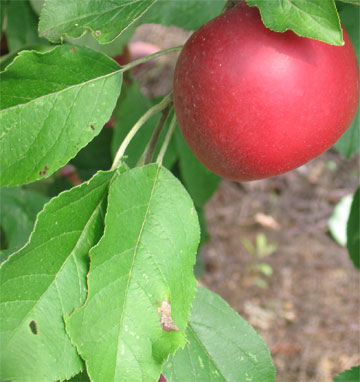
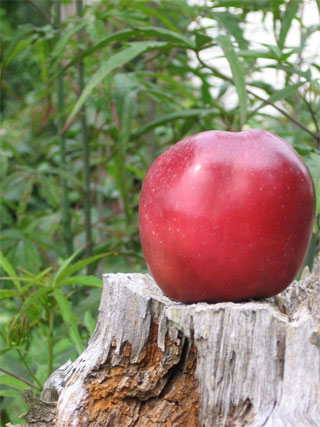
Carolina Red June
Esopus Spitzenberg
Esopus Spitzenberg: Originated in Esopus, New York before 1800. This apple was said to be Thomas Jefferson’s favorite apple. Though a northern apple, it can produce quality fruit in most areas of the south. In numerous apple taste testings at Monticello in Virginia, it has consistently ranked high. Fruit is yellow with red. Its flesh is yellow, crisp, juicy, rich, and aromatic. Begins ripening in September.

Esopus Spitzenberg
Father Abraham
Father Abraham: This apple originated before 1755, possibly in South Carolina, but many others point to Virginia or Germany, brought here by settlers. It is an excellent late ripening apple that stores well and makes great cider. The tree is a regular bearer. The apple is medium to small in size, dull red, fine grained, and sweet to slightly acidic. Ripens in late October into November.
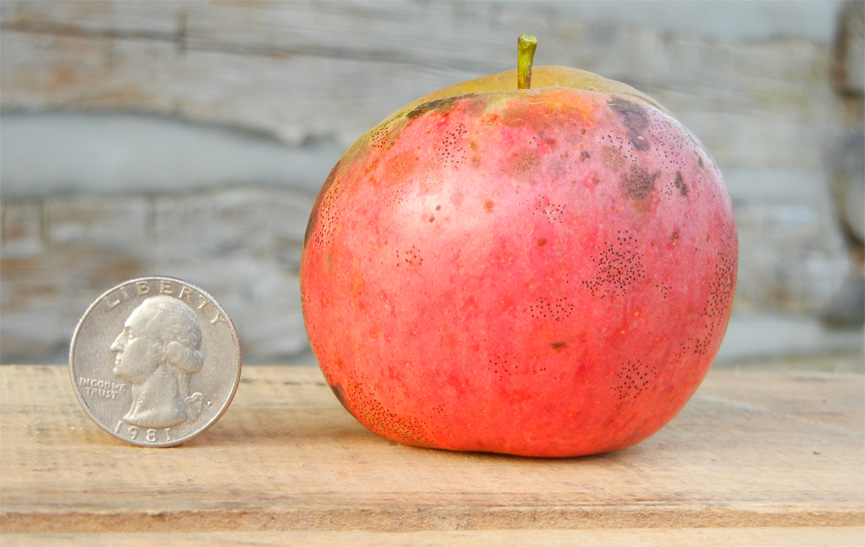
Father Abraham
Grimes Golden
Grimes Golden: A West Virginia apple originating around 1800, this apple was widely grown throughout the south and is known as the parent of the modern day Golden Delicious. It is a fine eating apple and makes excellent cider. It tends to bloom late, making heavy crops most years and light crops other years. Fruit is usually medium or larger. Its skin is yellow with some russet, flesh is yellow, firm, crisp, juicy, aromatic, sweet, and spicy. It ripens in September and stores fairly well. (One of my favorites.)
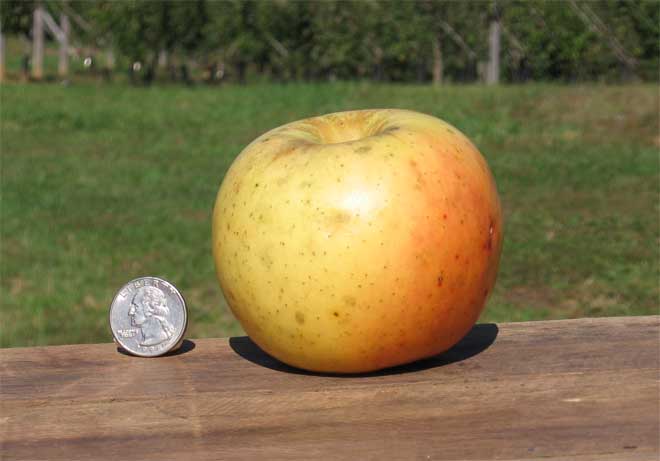
Grimes Golden
End of Page 1 of Old Southern Apple Descriptions.

